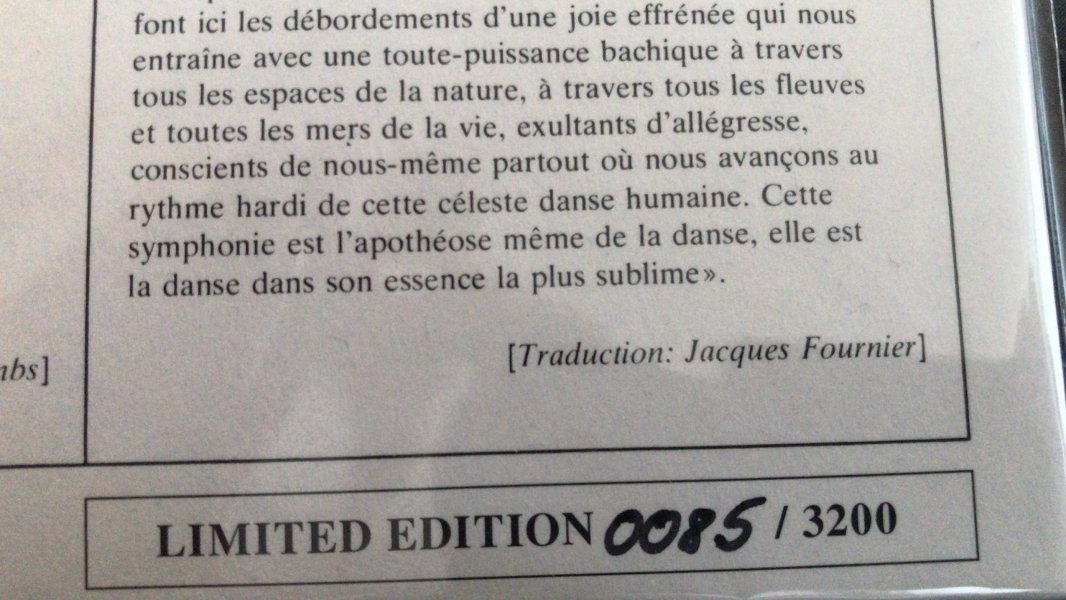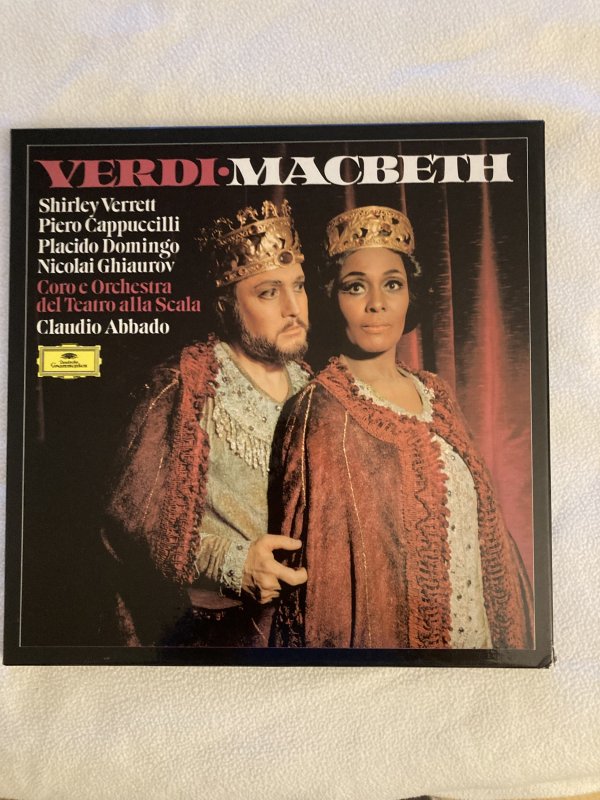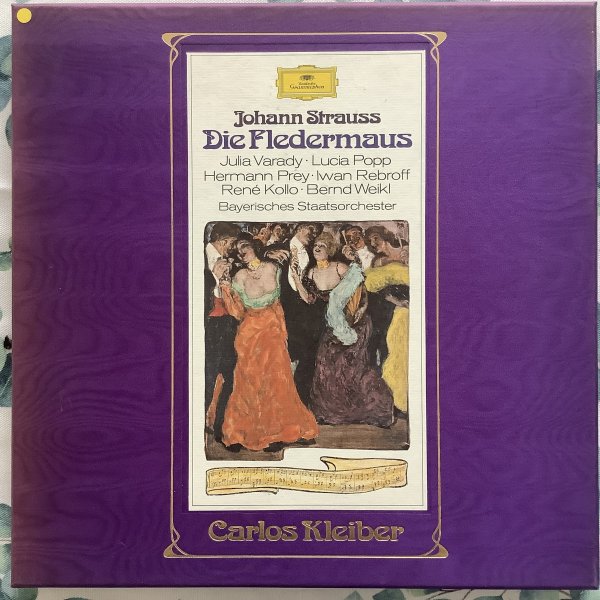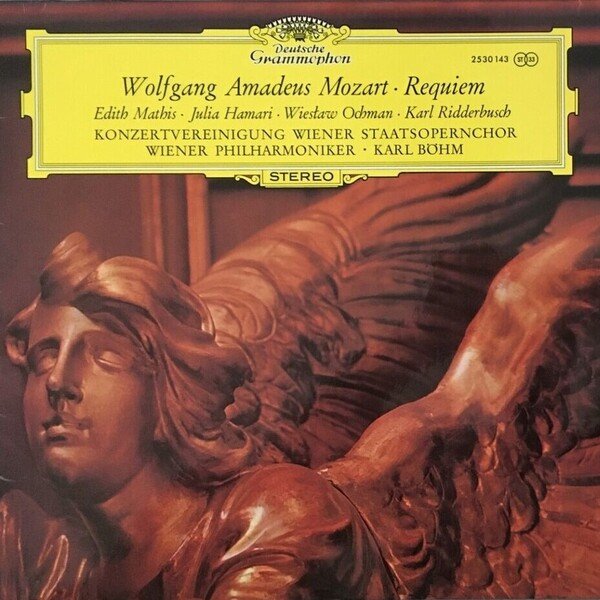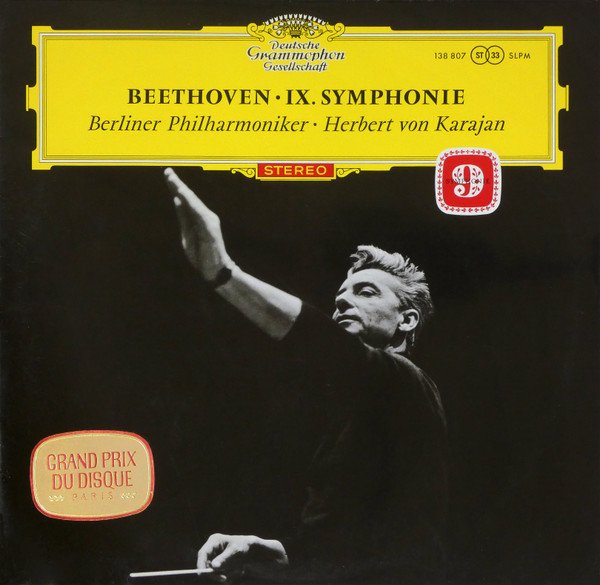The new audiophile vinyl series The Original Source from Deutsche Grammophon (AAA)
- Thread starter kodomo
- Start date
You are using an out of date browser. It may not display this or other websites correctly.
You should upgrade or use an alternative browser.
You should upgrade or use an alternative browser.
https://www.the-original-source.com/technical-background
Here, with pictures and explanation by Rainer Maillard.
Here, with pictures and explanation by Rainer Maillard.
[please forgive my poor English]
As I know very, very little to vinyl,
what are the differences to be expected between an Original Source vinyl record (approx. €60), and a Master Cut one? (€440 !)
Original Source: https://www.the-original-source.com/
Mastercuts: https://store.deutschegrammophon.com/p30-i2698
I understand that a) Mastercuts (MC) are one degree upwards in the production chain, and b) these have been produced "by the hands", one after one, by a technician, as no automation seems possible here. If I understand correctly, for each MC sample to be produced, the technician has to rewind the tape from the beginning, then start to produce a new MC sample again, then loop through that process.
Am I correct?
What will be the sonic differences? (if Rotatoubib can help, as soon as he's got his records - thanks)
As I know very, very little to vinyl,
what are the differences to be expected between an Original Source vinyl record (approx. €60), and a Master Cut one? (€440 !)
Original Source: https://www.the-original-source.com/
Mastercuts: https://store.deutschegrammophon.com/p30-i2698
I understand that a) Mastercuts (MC) are one degree upwards in the production chain, and b) these have been produced "by the hands", one after one, by a technician, as no automation seems possible here. If I understand correctly, for each MC sample to be produced, the technician has to rewind the tape from the beginning, then start to produce a new MC sample again, then loop through that process.
Am I correct?
What will be the sonic differences? (if Rotatoubib can help, as soon as he's got his records - thanks)
Right. I don't even know when it will be shipped, and how...No email.
God, DG online really are bad at this.
Sure, as soon as I receive both, I will let you know. I think Zoetrope bought DG Mastercuts and is very pleased[please forgive my poor English]
As I know very, very little to vinyl,
what are the differences to be expected between an Original Source vinyl record (approx. €60), and a Master Cut one? (€440 !)
Original Source: https://www.the-original-source.com/
Mastercuts: https://store.deutschegrammophon.com/p30-i2698
I understand that a) Mastercuts (MC) are one degree upwards in the production chain, and b) these have been produced "by the hands", one after one, by a technician, as no automation seems possible here. If I understand correctly, for each MC sample to be produced, the technician has to rewind the tape from the beginning, then start to produce a new MC sample again, then loop through that process.
Am I correct?
What will be the sonic differences? (if Rotatoubib can help, as soon as he's got his records - thanks)
Is it the LvB7 that’s 3200 copies? I remember it was presold out for a while.
I’ve only ordered the Trout from the first release batch and the French Abbado and the Karajan Verdi from the second. The money for the Trout was pulled from my card two days ago so I expect it over the weekend. Terribly expensive as the NOK has gone south.
I’ve only ordered the Trout from the first release batch and the French Abbado and the Karajan Verdi from the second. The money for the Trout was pulled from my card two days ago so I expect it over the weekend. Terribly expensive as the NOK has gone south.
Last edited:
AFAIK, the lacquer is cut directly from the two track master tape or two track mixdown of the session tapes (the chosen takes) or possibly a spliced together multitrack tape that is being mixed directly to the lacquer. This would have to be a limited release, since each lacquer would have to be made individually running the master tape in real time. Normally, a studio wouldn't allow more than a very few plays of the master tape (probably not more than a few dozen) since the master tape gets a bit of wear every time it is played. My understanding is that lacquers are more fragile than vinyl copies, and have a more limited lifetime of number of plays. An alternative which Mike suggests is that tape dubs of the master could be made and sold, for roughly 50% more than the selling price of the Mastercuts (say 650Euros). That would be quite attractive and could generate a similar profit, with the added cost of the tape to make the dubs. Probably easier than cutting lacquers.[please forgive my poor English]
As I know very, very little to vinyl,
what are the differences to be expected between an Original Source vinyl record (approx. €60), and a Master Cut one? (€440 !)
Original Source: https://www.the-original-source.com/
Mastercuts: https://store.deutschegrammophon.com/p30-i2698
I understand that a) Mastercuts (MC) are one degree upwards in the production chain, and b) these have been produced "by the hands", one after one, by a technician, as no automation seems possible here. If I understand correctly, for each MC sample to be produced, the technician has to rewind the tape from the beginning, then start to produce a new MC sample again, then loop through that process.
Am I correct?
What will be the sonic differences? (if Rotatoubib can help, as soon as he's got his records - thanks)
There should be at least one generation closer to the master tape with the MasterCut than the Original Source. the MasterCuts also seem to be different albums than the Original Source. I have several of both on 15ips 2 track tape. Most are dubs from safety or production masters. So they could be as close as the lacquer (if the source tape is a production or safety master) or a generation down from that.
Larry
DG as a label was never known for the quality of its recordings. As I recall vaguely, not one DG recording appeared on Harry Pearson’s Super Disc list in TAS, in contrast to scores of Decca, EMI, Mercury Living Presence and RCA’s. That said, DG obviously had some great conductors and orchestras in their repertoire and it’s hard to not be impressed by the quality of their vinyl from the 1960s and 1970s.DG Original Source
I am happy see new AAA series from one of the cornerstones of classical recording labels.There are four titles as of now, all mastered by Emil Berliner from original 4 track tapes. They say all of them will be on 180g vinyl and in deluxe gatefold with original covers. The records are limited and numbered and cost 35euros. No extortion prices and I am happy to pay that sum for clean AAA copies of good performances.
The first four titles are as follows;
Carlos Kleiber & Die Wiener Philharmoniker Beethoven: Sinfonie Nr. 7
Claudio Abbado & London Symphony Orchestra Stravinsky: Sacre Du Printemps
Emil Gilels, Amadeus Quartet & Rainer Zepperitz Schubert: Klavierquintett A-Dur “Forellenquintett” D. 667
Herbert von Karajan & Die Berliner Philharmoniker Mahler: Sinfonie Nr. 5
The email newsletter I got states that the series will continue for 14 albums which will be released over the course of 2023 but they’re maybe a typo there. Let's hope not!
I never bought DG vinyl for the quality of their recordings (which were invariably multimiked to the hilt), but the performances of the early Karajan Beethoven symphonies was outstanding even if he was usually let down by DG’s incompetent engineers. I would now only buy used vinyl from DG, which can be had for very little compared to the exorbitant prices asked here. Who cares about 4-5 recordings? There’s hundreds of thousands of used DG vinyl to choose from, often great performances. If you’re a collector, that’s the route I would recommend.
There’s a certain irony in DG releasing vinyl again — as I recall from the early 1980s, they were the first major classical label to abandon vinyl for CDs. The cynic in me attributes this to purely a financial motive, now that streaming has killed CDs as a revenue stream.
I’m occasionally surprised by a DG album’s recording quality. One beautiful recent album is the 2018 Carnegie Hall live chamber concert featuring a stellar cast. You can stream the high Rez version on Qobuz or buy the vinyl album. I have both and the vinyl indeed sounds superb. The marvelous acoustics of Carnegie Hall come out nicely.
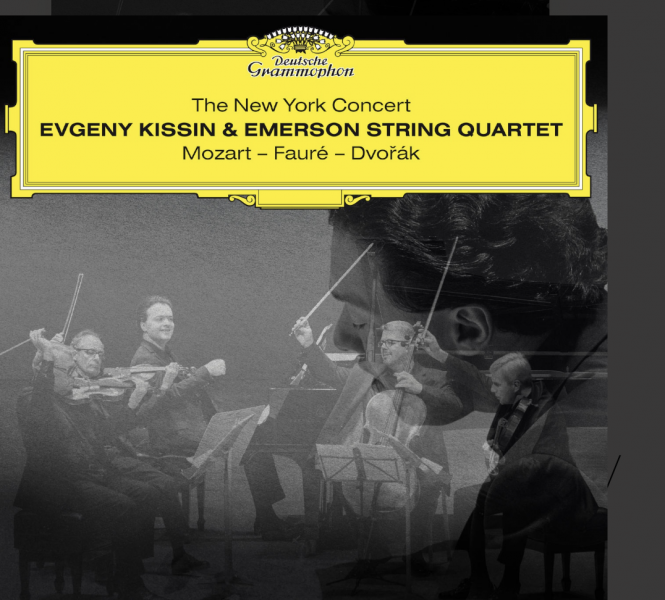
Indeed, I have most of the MasterCuts. They are metal lacquer discs, not vinyl.Sure, as soon as I receive both, I will let you know. I think Zoetrope bought DG Mastercuts and is very pleased
I don’t have the Original Source albums yet.
Is it the LvB7 that’s 3200 copies? I remember it was presold out for a while.
Yes. My favorite from this series btw.
Last edited:
All four LP’s are excellent performance vise IMHO. Pressings are perfect. No noise, no ticks, no pops, no hiss, and perfectly flat. Presentation is also top notch. High quality paper and some interesting material on the recording process.
I bought Beethoven 7 because I had only 2007 Japanese reissue which is decent but this DG is much better in every imaginable way. As with the other three in this group, the recording venue is very nicely rendered, orchestra is spreading in all directions. Sound is reasonably full, balanced, dynamic, uncompressed and extended (no thinness here) but can be a bit sharp sometimes on louder passages like some Speakers Corner reissues.
Just for fun, I will try to get one or two originals and will compare.
I bought Beethoven 7 because I had only 2007 Japanese reissue which is decent but this DG is much better in every imaginable way. As with the other three in this group, the recording venue is very nicely rendered, orchestra is spreading in all directions. Sound is reasonably full, balanced, dynamic, uncompressed and extended (no thinness here) but can be a bit sharp sometimes on louder passages like some Speakers Corner reissues.
Just for fun, I will try to get one or two originals and will compare.
it s left arm…A couple that spring to mind . In spite of HvK’s somewhat alarming conductorial cover pose:
View attachment 111219View attachment 111220
That one is from before the microphones were too many and all that. Just compare the soundstage in the last movement to the one on the 1977 recording.
Many DG recordings have unbelievable sound stages. The Michelangeli live LVB PC5 has a stage wide piano.
That said the battle scene at the end of act 1 of the Solti Walküre sounds like it happens in a cave, so not all Decca decisions were gold either.
Many DG recordings have unbelievable sound stages. The Michelangeli live LVB PC5 has a stage wide piano.
That said the battle scene at the end of act 1 of the Solti Walküre sounds like it happens in a cave, so not all Decca decisions were gold either.
- Original Source is a regular vinyl nothing special but high quality preserved on every stage of manufacturing. It’s cut from the master tape then the vinyl is pressed after 3 step (father-mother-stamper) plating process. That’s it’s disadvantage.what are the differences to be expected between an Original Source vinyl record (approx. €60), and a Master Cut one? (€440 !)
- Master Cut is a lacquer not a vinyl. It’s cut from a copy of the master tape not “the master tape”. On the other hand there is no additional process after cutting lacquer on a Neumann lathe. That’s it’s advantage but using a copy of the master tape is an important disadvantage.
I’ve seen varying quality with the Mastercut albums. One had too much noise and was replaced. Others had what looked like fine scratches or fingerprints on the surface (not sure if they were actually fingerprints or not). Doc said he “wouldn’t rest” until he identified the root cause, but hasn’t replied in months. That said, nothing is perfect, and they did replace the noisy album right away. I think what Supersense is doing is commendable as it’s great to have the option of owning a lacquer for a high but not crazy price.- Original Source is a regular vinyl nothing special but high quality preserved on every stage of manufacturing. It’s cut from the master tape then the vinyl is pressed after 3 step (father-mother-stamper) plating process. That’s it’s disadvantage.
- Master Cut is a lacquer not a vinyl. It’s cut from a copy of the master tape not “the master tape”. On the other hand there is no additional process after cutting lacquer on a Neumann lathe. That’s it’s advantage but using a copy of the master tape is an important disadvantage.
I have also spoken to a well regarded recording engineer and component designer who says he can hear the “metallic” signature of the sound from these lacquers.
| Steve Williams Site Founder | Site Owner | Administrator | Ron Resnick Site Owner | Administrator | Julian (The Fixer) Website Build | Marketing Managersing |







